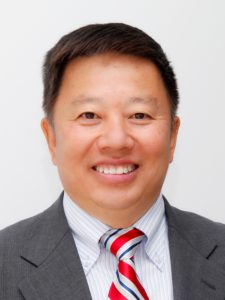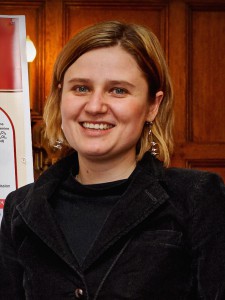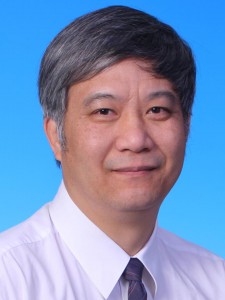As a joint venture between the chemistry communities of China and the UK, Materials Chemistry Frontiers strives to report the best research from China and rest of the world to international audiences.
 Board members of the journal regularly select and feature their favourite MCF articles that represent research the members see as possessing exceptional novelty and a potential impact to the development of the field.
Board members of the journal regularly select and feature their favourite MCF articles that represent research the members see as possessing exceptional novelty and a potential impact to the development of the field.
This month, Associate Editor Dan Wang picked his choice articles from those published in Materials Chemistry Frontiers during February and March 2017. This selection of articles focuses on the preparation of hybrid or nanomaterials and their promising applications in energy conversion and storage.
![]() All these articles are now FREE to read.
All these articles are now FREE to read.
@MaterChem on Twitter to tell us how you think about them.
Jin-Yi Li, Quan Xu, Ge Li, Ya-Xia Yin, Li-Jun Wan* and Yu-Guo Guo*
DOI: 10.1039/C6QM00302H, Review Article
First published online on 20 Feb 2017

Si-based anode materials provide a promising way to improve the energy density of lithium-ion batteries (LIBs) due to its environmentally friendly character, natural abundance, high theoretical capacity and attractive operating voltage. However, huge volume variation during lithiation/delithiation and low electric conductivity of Si make it challenging for practical applications of Si-based materials. Yu-Guo Guo and coworkers at Institute of Chemistry, Chinese Academy of Sciences analyzed the mechanisms of Li-Si alloying and cell failure of Si-based anodes and summarized research progress of Si-based anode materials. To obtain high reversible capacity and excellent cycling stability, nano/micro-structured Si/C and SiOx/C composite anodes with 3D conductive networks and stable interfaces are discussed. The researchers proposed the key aspects of Si-based materials and prospective strategies for promoting the practical applications of Si-based anodes in high energy density Li-ion batteries.
Mohammad Mahdi Tavakoli, Abdolreza Simchi, Xiaoliang Mo* and Zhiyong Fan*
DOI: 10.1039/C6QM00379F, Research Article
First published online on 06 Feb 2017

A new procedure to fabricate stoichiometric, uniform, and highly crystalline lead perovskite thin films. In this work, Fan et al. at The Hong Kong University of Science and Technology developed a layer-by-layer alternating (LBLA) vacuum deposition method to obtain methylammonium lead iodide thin films with much improved morphology, thickness uniformity and composition stoichiometry, as compared with previously reported two-step thin film deposition method. Characterizations show that LBLA films have higher crystallinity and longer carrier life-time. The better film quality leads to 20% improved power conversion efficiency in thin film perovskite solar devices, primarily owing to a higher fill factor and current density.
Sasitha C. Abeyweera and Yugang Sun*
DOI: 10.1039/C7QM00046D, Research Article
First published online on 09 Mar 2017

Stirring rate plays a significant role in determining the mass diffusion and thus nucleation and growth kinetics of forming colloidal nanocrystals in particular in high-viscosity solutions even though its importance is usually overlooked. By controlling the rate of solution stirring, Abeyweera and Sun from Temple University demonstrated the successful synthesis of various silver chlorobromide (AgClxBr1-x) nanoparticles with well-controlled sizes and morphologies through precipitation reaction of silver ions and halide ions in ethylene glycol. The as-synthesized AgClxBr1‒x nanoparticles provide a unique platform to accurately study the dependence of their photocatalytic activity on particle size (which determines charge separation efficiency) and morphology (which determines the type of catalytic surfaces).
Hao Tian, Hao Liu*, Tianyu Yang, Jean-Pierre Veder, Guoxiu Wang, Ming Hu, Shaobin Wang, Mietek Jaroniec* and Jian Liu*
DOI: 10.1039/C7QM00059F, Research Article
First published on 06 Mar 2017

This work presents a facile synthetic procedure of Fe3O4@carbon microboxes with core-shell, yolk-shell and hollow structures via one-step Stöber coating synthesis. Dr Jian Liu and co-workers working primarily at Curtin University, Australia, with connections to Shanghai University, China, and Kent State University, USA have synthesized a series of Fe3O4@carbon microboxes. When applied as electrodes in a lithium ion battery, the core–shell structured Fe3O4@carbon microboxes show an excellent performance with a high reversible capacity of 857 mA h g−1 that could be retained after 100 cycles at a current density of 0.1 A g−1. Their results revealed that a great performance of the Fe3O4@carbon microboxes proves the importance of rational design and fabrication of core–shell particles with tuneable structures, multi-chemical composition and improved functionalities.
*This article is also featured as the front cover story for Mater. Chem. Front., Vol 1, Iss 5.
Jin Fang, Dan Deng, Jianqi Zhang, Yajie Zhang, Kun Lu and Zhixiang Wei*
DOI: 10.1039/C6QM00308G, Research Article
Published as Advance Articles on 06 Feb 2017
Editor’s comments:

Previous articles recommended by MCF board members are also open for all to access. Read the full collection now!











 The front cover story,
The front cover story, 

 A very powerful approach, solvent-assisted linker exchange (SALE) in metal-organic frameworks (MOFs), was developed in the Hupp and Farha team from Northwestern University, USA. One of the major advantages of SALE is preservation of a MOF topology while introducing a new functionality. The authors demonstrated that SALE could also be applied to increase MOF stability. In particular, increase of stability of widely used UiO-66 framework was reported through incorporation of benzene-1,4-dihydroxamic acid linkers due to formation of stronger bonds. These studies reveal a new avenue in the use of post-synthetic techniques, such as SALE, to access robust metal-organic materials, which is a key component for practical application development.
A very powerful approach, solvent-assisted linker exchange (SALE) in metal-organic frameworks (MOFs), was developed in the Hupp and Farha team from Northwestern University, USA. One of the major advantages of SALE is preservation of a MOF topology while introducing a new functionality. The authors demonstrated that SALE could also be applied to increase MOF stability. In particular, increase of stability of widely used UiO-66 framework was reported through incorporation of benzene-1,4-dihydroxamic acid linkers due to formation of stronger bonds. These studies reveal a new avenue in the use of post-synthetic techniques, such as SALE, to access robust metal-organic materials, which is a key component for practical application development. Due to modularity and exceptional tunability, metal-organic frameworks (MOFs) offer a number of advantages for efficient gas separation. Thus, Chen and co-workers from the University of Texas at San Antonio, USA reported the novel MOFs, which selectively adsorb CO2 over CH4 and N2, as shown by single component gas sorption and selectivity calculations. The reported studies are an important step forward for the industrial separation of CO2/CH4 and CO2/N2 gas mixtures as well as a next generation of efficient absorbents.
Due to modularity and exceptional tunability, metal-organic frameworks (MOFs) offer a number of advantages for efficient gas separation. Thus, Chen and co-workers from the University of Texas at San Antonio, USA reported the novel MOFs, which selectively adsorb CO2 over CH4 and N2, as shown by single component gas sorption and selectivity calculations. The reported studies are an important step forward for the industrial separation of CO2/CH4 and CO2/N2 gas mixtures as well as a next generation of efficient absorbents. The front cover story,
The front cover story, 
 Recent advances in the synthesis of Janus nanomaterials of block copolymers
Recent advances in the synthesis of Janus nanomaterials of block copolymers Following review articles are included in current issue:
Following review articles are included in current issue:


 Editor’s Comments:
Editor’s Comments:
 Alpha-ʟ-fucosidase (AFU) is an enzyme that belongs to the family of hydrolases and that plays a vital role in all mammalian cells at low concentrations. Aberrant levels of AFU, however, cause health problems such as fucosidosis and carcinoma. Effective detection of AFU can thus be very useful in terms of early disease diagnosis. F. Zeng, S. Wu and coworkers at South China University of Technology (Guangzhou) presented the first example of ratiometric fluorescent bioprobe for AFU assay. The bioprobe is based on the mechanism of AFU-catalyzed selective cleavage of α-ʟ-fucose group, enabling highly sensitive and selective detection of AFU in live cells. Its detection limit is as low as 0.0033 U mL-1. The researchers successfully applied this bioprobe to a hepatocellular carcinoma model of zebrafish for monitoring and spatially mapping endogenous AFU levels. This work offers an effective approach to studying AFU-associated physiological and pathological processes.
Alpha-ʟ-fucosidase (AFU) is an enzyme that belongs to the family of hydrolases and that plays a vital role in all mammalian cells at low concentrations. Aberrant levels of AFU, however, cause health problems such as fucosidosis and carcinoma. Effective detection of AFU can thus be very useful in terms of early disease diagnosis. F. Zeng, S. Wu and coworkers at South China University of Technology (Guangzhou) presented the first example of ratiometric fluorescent bioprobe for AFU assay. The bioprobe is based on the mechanism of AFU-catalyzed selective cleavage of α-ʟ-fucose group, enabling highly sensitive and selective detection of AFU in live cells. Its detection limit is as low as 0.0033 U mL-1. The researchers successfully applied this bioprobe to a hepatocellular carcinoma model of zebrafish for monitoring and spatially mapping endogenous AFU levels. This work offers an effective approach to studying AFU-associated physiological and pathological processes. Almost all the proteinogenic amino acids are L-stereoisomers in the living systems. Is there any biological implication of this structural motif? A “yes” answer was given in a recent study by Y. Shen, Z. Li and collaborators at Qingdao University of Science and Technology (Shandong) and Institute of Chemistry of Chinese Academy of Sciences (Beijing). The researchers prepared surface-grafted poly(γ-benzyl glutamate) brushes with different secondary structures to investigate the influence of main-chain chirality on cell adhesion behaviours. They found that cells adhered and grown more densely and homogeneously on the poly(γ-benzyl L-glutamate) (PBLG)-grafted surfaces than on those grafted with its enantiomeric counterpart poly(γ-benzyl D-glutamate) (PBDG). This is possibly owing to the chirality recognition of living cells through the stereospecific interactions between the chiral molecules and the cell surface proteins. This study may help better understand cell/chirality interactions.
Almost all the proteinogenic amino acids are L-stereoisomers in the living systems. Is there any biological implication of this structural motif? A “yes” answer was given in a recent study by Y. Shen, Z. Li and collaborators at Qingdao University of Science and Technology (Shandong) and Institute of Chemistry of Chinese Academy of Sciences (Beijing). The researchers prepared surface-grafted poly(γ-benzyl glutamate) brushes with different secondary structures to investigate the influence of main-chain chirality on cell adhesion behaviours. They found that cells adhered and grown more densely and homogeneously on the poly(γ-benzyl L-glutamate) (PBLG)-grafted surfaces than on those grafted with its enantiomeric counterpart poly(γ-benzyl D-glutamate) (PBDG). This is possibly owing to the chirality recognition of living cells through the stereospecific interactions between the chiral molecules and the cell surface proteins. This study may help better understand cell/chirality interactions.







